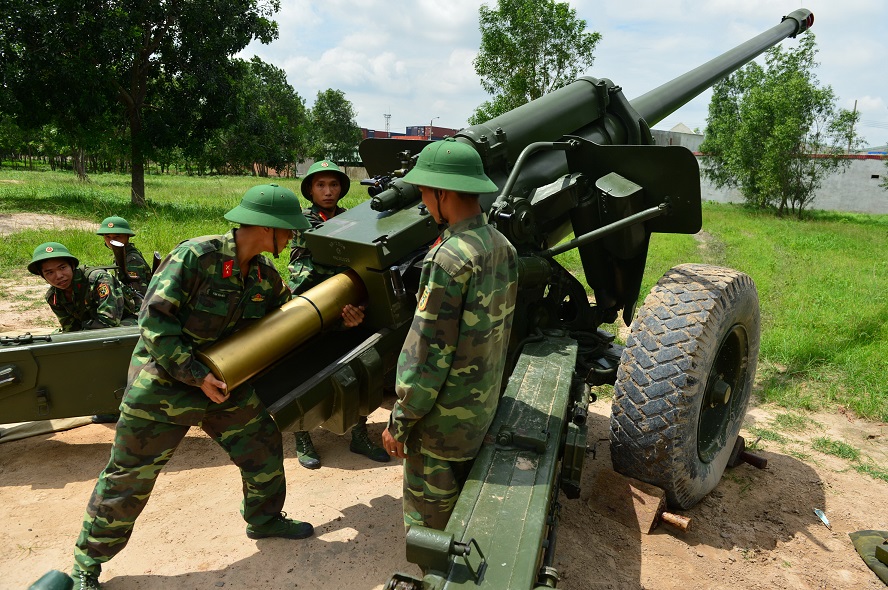Following in the footsteps of veterans, new recruits to Vietnam’s artillery unit are quickly becoming accustomed to the relentless training needed to achieve the specialized skills and elite combat readiness their older counterparts were known for.
A typical day for the 434 Artillery Brigade, under the Vietnam People’s Army, begins at 7:00 am when soldiers gather on the exercise field, shovels in hand.
After the soldiers are assembled, Captain Nguyen Duy Cuong’s loud and assertive voice begins commands, instructing troops to start the exercise by digging holes and readying their weapons.
“The holes are filled with firewood that will cushion the recoil from the cannon as it fires,” the instructor elaborated.
According to Cuong, members of the brigade are specialized in three types of artillery - the 130 millimeter gun, the 105 millimeter howitzer, and the multiple rocket launcher BM-21.
Wiping his sweat during break time, Sau Sau Phuoc Hiep, a 22-year-old soldier from District 5, Ho Chi Minh City, said that he has been in the military for five months.
“I was equipped with basic knowledge and tactical skills in the first three months before beginning specialized artillery training a month and a half ago,” Hiep recalled.
All of the cannons appeared terrifying at first, the soldier said, adding that his fear was soon replaced by excitement and curiosity about their operation.
“I consider myself lucky to be able to learn about and interact with this type of weaponry,” Hiep said.
A bit homesick
Private Ho Van Minh Tieng, 21, from the southern province of Ben Tre, shared some insight into his life as a military rookie during a brief interview with Tuoi Tre (Youth) newspaper.
“Things were difficult at first and the lifestyle was so unfamiliar, but we have grown to be brothers. Whenever I feel homesick, my comrades are always there to cheer me up,” Tieng said.
Expressing a similar opinion, Hiep stated that it took him over a month to start adapting to the new environment, adding that the longest he had ever been away from home was just a few days.
“I joined the army when I was a senior majoring in hospitality services. I packed my bags and left as soon as I got the notice. My family was furious,” Hiep joked as he recounted.
From a playful and humorous student, Hiep has matured throughout his short army life.
“You have to work and study from early morning until bedtime. There is no time to feel homesick, which is a good thing,” the soldier stated, adding that he has lost almost 13 kilograms since joining.
It is common for troops to miss their homes during their first days, said Captain Thai Quoc Dung, the political commissar of the unit and a veteran at guiding new recruits.
“I sometimes catch them crying over their parents or lovers,” Dung continued.
Aside from their busy schedule, the encouragement from their commanders helps the recruits adapt to a new lifestyle.
The troops have learned to take care of themselves and bond with each other as they practice, clean the cannons, and participate in sports and other artistic activities, Dung stated.
Like us on Facebook or follow us on Twitter to get the latest news about Vietnam!





















































